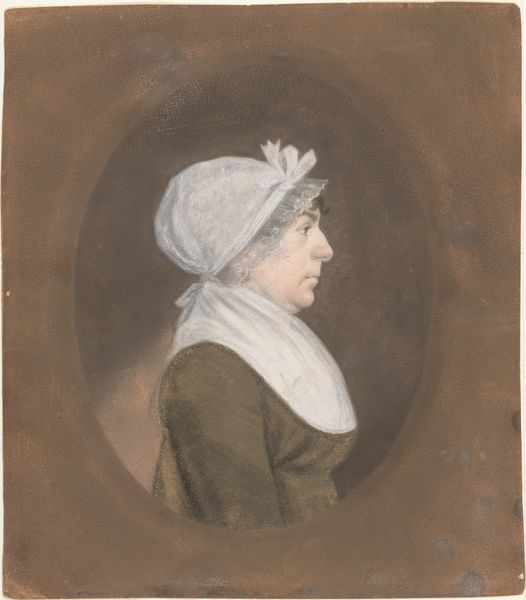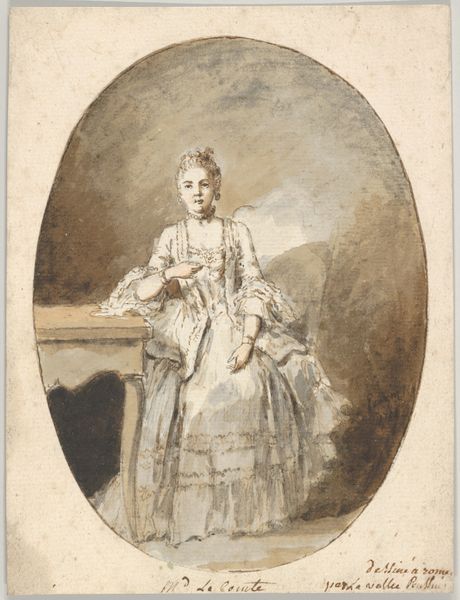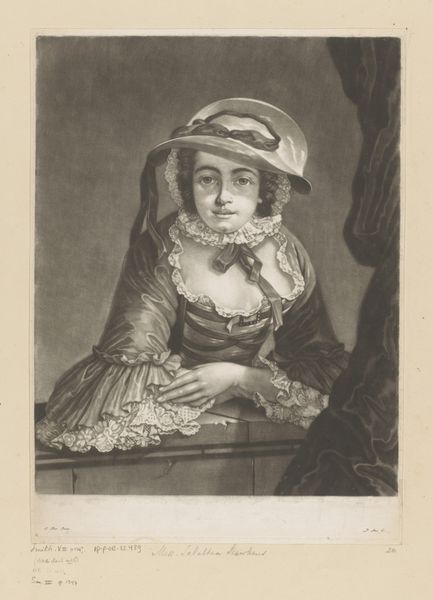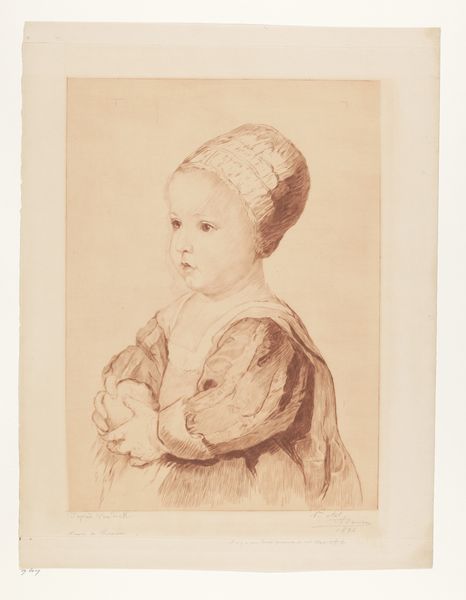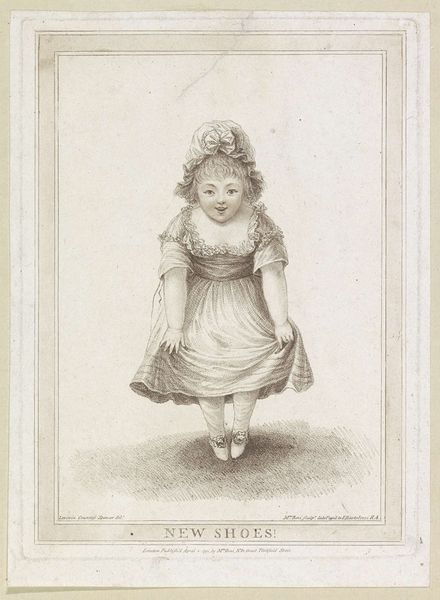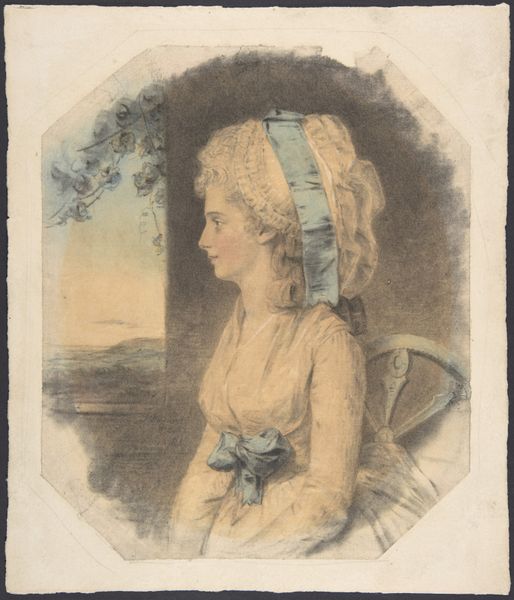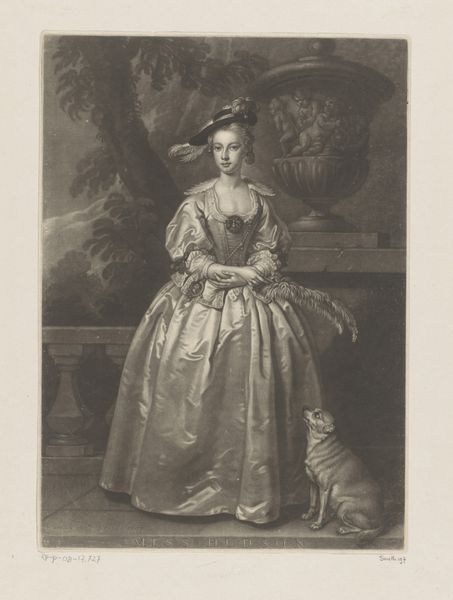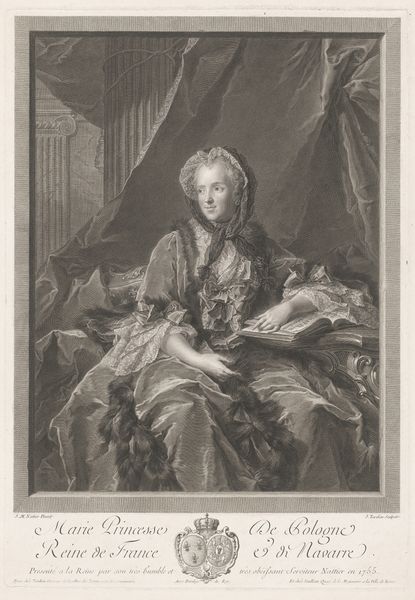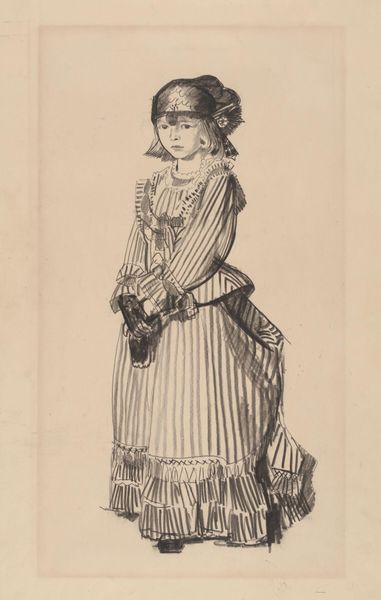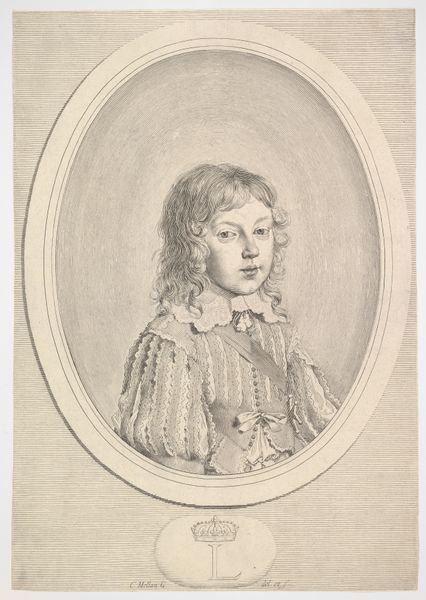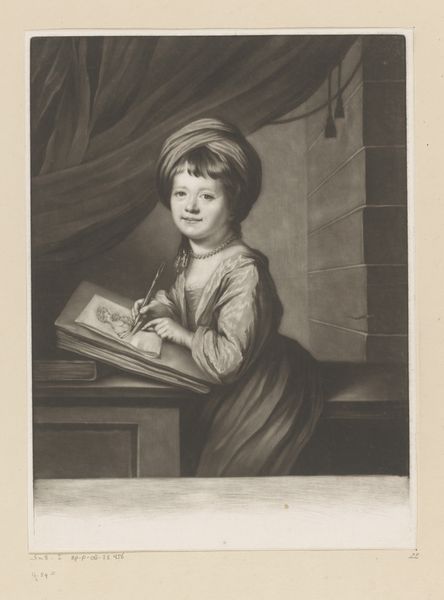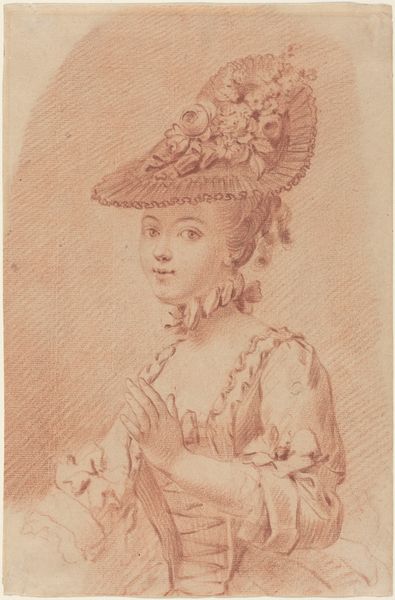
Portret van een meisje, zittend met een waaier Possibly 1804 - 1817
0:00
0:00
anthonyoberman
Rijksmuseum
drawing, coloured-pencil
#
portrait
#
drawing
#
coloured-pencil
#
figuration
#
romanticism
#
miniature
Dimensions: height 346 mm, width 267 mm
Copyright: Rijks Museum: Open Domain
Curator: Sober but sweet. I’m immediately drawn to the materiality—the way the colored pencils have been layered. Editor: And the overall impression is one of delicacy, wouldn’t you say? This is a colored-pencil drawing entitled "Portret van een meisje, zittend met een waaier"—"Portrait of a Girl, Sitting with a Fan." It was created by Anthony Oberman, likely sometime between 1804 and 1817. Curator: The almost imperceptible gradations of tone create a gentle realism, giving form to the girl's face. But the paper seems visible beneath the drawing, making the rendering somewhat ethereal, like a ghost from the past. It underscores the historical constraints and expectations placed upon young women. Editor: Exactly! Oberman would have carefully selected pigments and combined them with binding media to create each individual color. We’re also viewing this artwork today in the context of its preservation – the frame that now protects it also isolates it from potential physical interactions. What do you make of the subject herself, this young girl? Curator: She appears both guarded and subtly defiant. Consider the fan – is it a gesture of decorum, or a subtle assertion of independence, of the labor involved in staying cool? This, combined with the rigidity expected of women in that period—it creates an incredibly charged representation. I mean, sitting for a portrait, the fabrics and patterns of the clothing – these are materials that communicated status but were also heavy, constricting, both physically and symbolically. Editor: True. Also, consider the market for portraiture at that time—what was it offering and promising the emerging middle class? I'm thinking particularly about the Romantic aesthetic and the miniature size—suggesting intimacy but also the commodification of affection. Curator: Ultimately, Oberman has presented us with a portrait that exists both as a likeness and as an embodiment of socio-political pressures of the time. The slight wavering in the child’s gaze makes me wonder how women navigated constraints upon them. Editor: Seeing the labor, too, that has gone into the image alongside the constraints. So much embedded, from the sourcing of the materials, their transformation, the social environment… All in service to, perhaps, revealing an elusive character that haunts us today.
Comments
No comments
Be the first to comment and join the conversation on the ultimate creative platform.
